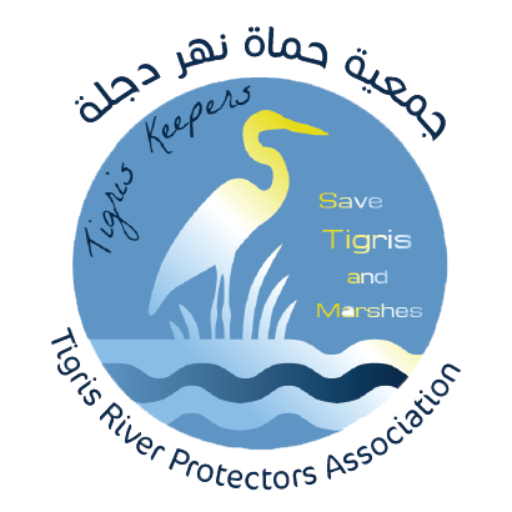Wetlands between the Two Rivers, or the Mesopotamian Marshes, represent one of the most important wetland systems in the Middle East, with significant environmental, social, and cultural importance. They support immense natural diversity and constitute a socio-ecological system that has been inhabited by marsh dwellers for thousands of years. These inhabitants rely on the resources of these wetlands through bird hunting, fishing, reed cutting, and buffalo husbandry.
The marshes are one of the largest wintering areas for waterfowl, especially those migrating along the Eurasian flyway – from Qazvin to the Nile. They also serve as a critical resting area for coastal birds migrating across West Asia, East Africa, and contribute significantly to global migratory routes between continents. Moreover, they are important breeding grounds for migratory water birds across West Asia. The marshes have been described as important stopover areas for many wader and waterfowl species.
However, during the regime in the 1990s, the marshes (including the Central Marshes) were drained through a network of canals diverting water to the Gulf, resulting in the destruction of the ecosystem and the displacement of marsh dwellers, disrupting their traditional way of life. After 2003, the Central Marshes were partially re-flooded, restoring the natural ecosystem and prompting many marsh dwellers to return to their traditional way of life.
The Central Marshes serve as a resting area for large numbers of waterfowl migrating from cold areas during winter and provide a suitable environment for the breeding of important bird species. According to a study presented in the book “Key Biodiversity Areas in Iraq,” the Central Marshes are considered one of the most important of these areas. They have also been identified as Important Bird Areas (IBAs) in Iraq.
Population growth, increased demand for water, accompanied by climate change and decreased rainfall regionally, as well as the construction of dams on the Tigris and Euphrates rivers, have all contributed to slowing and disrupting the natural regeneration of the marshes. The marshes are now threatened by water scarcity and even drought during certain periods.
These factors have played a role in cases of drought in the Central Marshes in 2008-2009, the summer of 2015, and in 2017-2018, significantly affecting wildlife and the inhabitants living there. Recognizing its significance and meeting the criteria for natural reserves, the Central Marshes were declared Iraq’s first National Park in 2013 by the Iraqi Cabinet. Additionally, they were included in the Ramsar Convention on Wetlands in October 2015, and more recently listed on the UNESCO World Heritage List as part of the South Marshes in July 2016, highlighting their global importance.
In terms of conservation and biodiversity protection, Iraq ratified the Convention on International Trade in Endangered Species of Wild Fauna and Flora (CITES) in 2014, linking wildlife and international trade with binding provisions aimed at conserving species and ensuring their sustainable use. Iraq also signed the Convention on the Conservation of Migratory Species of Wild Animals (CMS), and Law No. 29 of 2016 was issued in this regard.
Despite all these measures, the Central Marshes still suffer from neglect in the absence of real government intervention. Overhunting, which mainly targets wild birds, remains one of the main reasons for the pressure on natural resources and their overexploitation. There is extensive evidence of continued overhunting practices and their negative effects in the southern marshes in general and the Central Marshes in particular, resulting in a significant decline in the numbers of resident and migratory birds annually, as documented in numerous studies and reports.
This study was developed by the Humat Dijlah Association to assess the state of bird hunting in the Central Marshes, identify illegal hunting practices, explore their causes, and develop possible solutions to address these issues.
We evaluated bird hunting in the National Park of the Central Marshes as a model for bird hunting in Iraqi marshes in general. We conducted interviews with several bird hunters identified in the Central Marshes area, and we relied on references and information available from civil society organizations, in addition to field observations.
We estimated that over 50,000 birds are hunted annually, targeting 22 species of water birds (resident and migratory), including globally threatened species. Our study confirmed that the Central Marshes, including the National Park, are subject to illegal and unsustainable bird hunting practices annually.
Bird hunting occurs due to several factors, including economic and social reasons, such as livelihoods or sport. Our study documented illegal bird hunting activities and tools used in the Central Marshes, and finding alternative economic opportunities for hunters will reduce and curb unsustainable hunting activities.
The information provided in this study can help identify areas that need protection from bird hunting and other unsustainable practices to protect birds and wildlife. This will be useful for the success of the National Park management plan, necessary to preserve the ecological integrity of the marshes and the biodiversity values essential for maintaining their status as a World Heritage Site.


Leave a Reply